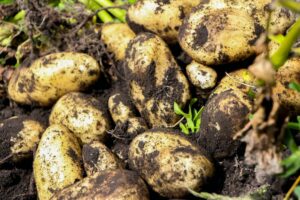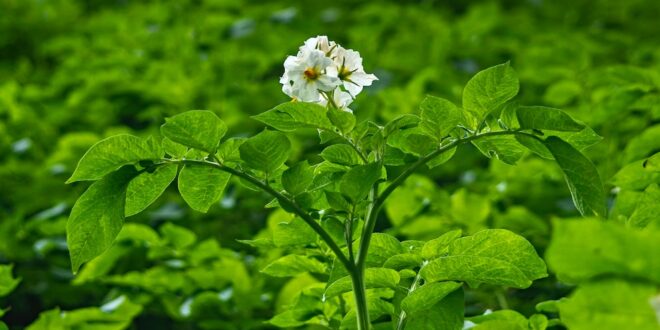Release the Squirrel Within!
Kiwis love nothing more than a good spud – and many of us grow our own to satisfy that very craving! Now, research has come up with tried and true tips to help our potato crop last longer than ever. Here’s what we know:
Sow the keepers
 It turns out white potatoes keep longer than red varieties. That’s good news for lovers of what is fast becoming our favourite potato variety (the white-skinned Agria). What’s more, thick-skinned potatoes keep longer than varieties with thin skins. Russets are among the most thick-skinned of potatoes, so for a keeper, be sure to check out Russett burbank which is available in New Zealand. Lastly, late season potatoes store better than new season potatoes (so be sure to grow a late-season variety if you intend storing the crop over winter).
It turns out white potatoes keep longer than red varieties. That’s good news for lovers of what is fast becoming our favourite potato variety (the white-skinned Agria). What’s more, thick-skinned potatoes keep longer than varieties with thin skins. Russets are among the most thick-skinned of potatoes, so for a keeper, be sure to check out Russett burbank which is available in New Zealand. Lastly, late season potatoes store better than new season potatoes (so be sure to grow a late-season variety if you intend storing the crop over winter).
Hold the water!
Potatoes store best if the plants receive little or no moisture from mid-February onwards. That’s your cue to hold back on watering in late summer. If your potato patch isn’t too large, consider placing a water-proof covering over the plants if you have an extended period of rain.
Timing is everything
Mature potatoes store best. Other than if the plants are diseased, or if a very early frost cuts back the foliage, maturity is signalled by the dying back of the potato plant’s foliage. Resist digging the potatoes until this has occurred. (If you can’t wait, you can reach under the soil and extract one or two tubers to cook immediately. But if you do this, be sure to cover up your excavations so that light doesn’t reach the remaining potatoes, and turn them green.)
To wash or not to wash?
If your potatoes have been grown in loose, friable soil, dust them off lightly with a clean, soft bristled brush. However, if your potatoes have been grown in heavy or clayish soils, give them a wash in fresh, clean water. The reason for this is potatoes store best when thoroughly dry, and any soil that clings to them is likely to hold in moisture. Dry the potatoes thoroughly before storing (see below).
Give them the ‘cure’!
Curing is a process of providing vegetables with ideal storage conditions for a set period of time, in order to promote their keeping qualities. In the case of potatoes, the curing hardens the skin of the tuber, and promotes the healing of cuts or blemishes. To cure potatoes, dry them in a warm place for 3-4 hours, turning them once or twice during this time. If they need longer to dry, finish this off in a dark place to avoid the potatoes turning green.
When thoroughly dry, store the potatoes for 10 days to 2 weeks at a temperature of between 7 and 15°C, and a humidity of 85-95 %. The high humidity helps to prevent shrivelling. A damp cellar can provide the ideal spot for curing. To increase humidity levels, try placing the potatoes in perforated plastic bags (never in sealed plastic containers).
Once cured, discard any potatoes with greening. Use up blemished or cut potatoes as soon as possible. Store the remaining potatoes in dry hessian or paper sacks in a rodent-free, light-proof place at a temperature range of 4.5-7°C (a garage or garden shed may fit these requirements).
Good for you, good for your potatoes!
Correctly storing your potato crop can at first seem like a faff, but as you’re carrying out the process with a bulk edible, it’s definitely worth while doing. Besides which, well-stored vegetables retain their goodness longer, and are better for us. And what could be better than home grown health, right through the most challenging months of the year!










Join the Discussion
Type out your comment here:
You must be logged in to post a comment.